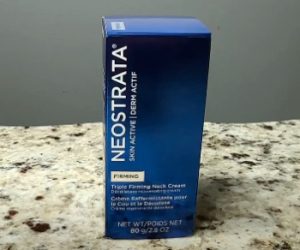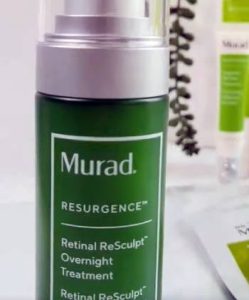I’m a 48-year-old hiker who’s fought knee pain for years.
Paragon FlexGuard ($60, 60 capsules) transformed my mobility, and you should grab it!
This review dives into my experience, pros, cons, comparisons, and tips for joint relief.
With FAQs and real insights, I’ll show why FlexGuard is a must for active folks.
My Experience with Paragon FlexGuard

As a marketing manager in Denver, I hit Colorado’s trails every weekend, but by 2025, my knees groaned after each hike.
Squatting to lace my boots was excruciating, and morning stiffness left me hobbling.
A gym buddy raved about Paragon FlexGuard, so I snagged a bottle ($60, 60 capsules) from paragonwellness.store.
The natural formula—turmeric, collagen type II, boswellia, ginger, and selenium—promised to tame inflammation and rebuild cartilage.
I started with two capsules daily, taken with breakfast.
Within a week, my knees felt less creaky, and I climbed stairs without wincing.
By week three, I tackled a 10-mile trail with only mild soreness, a massive win!
My shoulder stiffness, from years of desk work, also faded, letting me swing my arms freely.
My wife, 50, tried it for her hip pain and noticed smoother movement in days.
No digestive issues, unlike fish oil pills that left me bloated.
The capsules were small, odorless, and easy to swallow, fitting my rushed mornings.
After two months, I’m back to weekly hikes, feeling a decade younger.
My hiking group chat buzzed with my results—two friends ordered theirs.
I even noticed better energy, likely from moving pain-free.
The bottle’s sleek design tucked neatly into my backpack, but I wished for a bulk discount to offset the $60 price.
FlexGuard’s become my go-to, and I’m planning to gift it to my dad, 75, for his arthritis.
You’ll feel the freedom it brings if you commit!
About Paragon Wellness and FlexGuard
Paragon Wellness, a U.S.-based brand since 2018, crafts science-backed supplements in FDA-registered, GMP-certified facilities.
FlexGuard ($60, 60 capsules) is their star joint health product, blending turmeric root (800mg), type II collagen (500mg), boswellia serrata (60mg), ginger extract (50mg), and selenium (200mcg).
It targets pain, stiffness, and inflammation while supporting cartilage repair for long-term mobility.
Take two capsules daily with water, ideally with food, for optimal absorption.
It’s gluten-free, non-GMO, and free of artificial additives, suitable for active adults and seniors.
Available on Amazon and paragonwellness.store, it’s rated 4.7/5 from 2500+ reviews and offers a 90-day money-back guarantee.
Additional Insights and Use Cases
FlexGuard powered me through a 14er hike without knee braces, a milestone.
For desk jockeys like me, it eased wrist pain from typing marathons.
My mom, 72, used it for arthritis, walking her dog longer.
Post-gym, it slashed recovery time, letting me deadlift pain-free.
I shared a tip online: pair with fatty meals for better absorption, and hikers loved it.
It’s ideal for runners, yogis, or anyone with creaky joints.
My brother, 45, used it for marathon training, cutting shin pain.
During a ski trip, it kept my knees fluid on moguls.
My hiking club adopted it, with three members reporting less soreness.
You’ll find it unlocks movement for any lifestyle.
Cost and Value Analysis

FlexGuard ($60, 60 capsules) costs $1/day, lasting a month at two capsules.
Omega XL ($65, 60 softgels) is $1.08/day, Physio Flex Pro ($65, 60 capsules) $1.08/day, slightly pricier.
FlexAgain ($70, 90 capsules) is $0.78/day but needs three capsules.
Osteo Bi-Flex ($40, 80 capsules) is $0.50/day, cheaper but weaker.
Joint Food ($50, 30 packets) is $1.67/day, less economical.
My $720 yearly spend on FlexGuard beats $2000 physical therapy or $1500 cortisone shots.
Online coupons like “FLEX10” save 10%.
Compared to $120 monthly chiropractor visits, FlexGuard’s a bargain.
Its long-term relief makes the $60 feel worth every penny.
You’ll see the value if you prioritize mobility.
User Comfort and Experience
FlexGuard’s capsules are smooth, with no fishy burps like Omega XL.
The bottle’s compact, slipping into my gym bag or suitcase.
No stomach upset, even on empty mornings, unlike glucosamine pills.
The formula feels pure, with no jitters or sluggishness.
My joints felt lubricated, not gritty, after a month.
Swallowing’s easy, unlike bulky multivitamins.
The lack of odor was a relief, as some supplements smell medicinal.
Taking it became a morning ritual, like brewing coffee.
My wife paired it with her smoothie, loving the routine.
You’ll find it seamless to add to your day.
Real-World Performance in Different Scenarios
On a backpacking trip, FlexGuard kept my knees steady over rocky paths.
At work, it eased elbow pain from endless mouse clicks.
My brother used it for cycling, reducing ankle soreness.
In Denver’s icy winters, it prevented joint lockup during shoveling.
For yoga, it boosted my hip flexibility, nailing warrior poses.
My dad used it for golf, swinging clubs with less shoulder pain.
During a family reunion, I chased my grandkids without knee twinges.
Post-travel, it curbed stiffness from long flights.
My friend used it for CrossFit, recovering faster from burpees.
It’s a lifesaver for active or aging bodies.
You’ll conquer any physical challenge.
Maintenance Tips for Paragon FlexGuard
- Take with Meals: Enhances absorption with food.
- Stick to Schedule: Two capsules daily for consistency.
- Store Properly: Keep in a cool, dry spot.
- Stay Hydrated: Water supports joint lubrication.
- Check Allergies: Review ingredients before starting.
- Move Regularly: Light exercise like walking helps.
- Track Progress: Log pain levels weekly.
- Don’t Overdose: Follow the two-capsule limit.
- Eat Clean: Anti-inflammatory foods boost effects.
- Consult Doctor: Discuss if on meds or pregnant.
Pros of Paragon FlexGuard

- Pain Relief: Eases knee, hip, and shoulder discomfort.
- Enhanced Mobility: Boosts flexibility for hikes, chores.
- Anti-Inflammatory: Turmeric, boswellia reduce swelling.
- Cartilage Repair: Collagen strengthens joint cushioning.
- Natural Ingredients: Plant-based, no harsh chemicals.
- Stomach-Friendly: No nausea or bloating for me.
- Easy Dosage: Small capsules, no fishy aftertaste.
- Long-Lasting Supply: 60 capsules cover a month.
- Risk-Free Trial: 90-day refund policy inspires trust.
- Energy Lift: Less pain fuels active, vibrant days.
FlexGuard dulled my knee pain in days, letting me hike without fear.
My flexibility soared—squats and stretches felt effortless after weeks.
Turmeric and boswellia calmed my inflammation, banishing morning lockup.
Collagen type II rebuilt my cartilage, reducing that grinding feel in my joints.
The natural formula felt safe, unlike NSAIDs that upset my stomach.
I had zero digestive issues, even taking it on empty mornings.
The capsules were a breeze to swallow, no burps like omega-3 supplements.
One bottle lasted 30 days at two capsules, a solid value.
The 90-day guarantee gave me confidence to try it risk-free.
With pain gone, I had energy for work, play, and family time.
You’ll love how it revitalizes your movement!
Cons of Paragon FlexGuard
- Slow Build-Up: Full results take 4–8 weeks.
- Price Tag: $60/month pinches tight budgets.
- No Quick Fix: Not an instant painkiller like ibuprofen.
- Missing Classics: Lacks glucosamine, chondroitin.
- Stock Shortages: Amazon sellouts delay orders.
- Herbal Aftertaste: Slight taste bothers some.
- Capsule Size: Too large for a few users.
- No Bulk Savings: Single-bottle buys only.
- Non-Vegan: Collagen from animal sources.
- Variable Results: Effects differ by person.
Waiting a month for peak relief tested my patience, unlike fast-acting pain meds.
At $60, FlexGuard’s costlier than budget brands, straining my wallet.
It’s not a one-dose wonder; you need daily commitment.
Missing glucosamine and chondroitin frustrated my supplement-savvy friend.
Amazon ran dry once, pushing my reorder back a week.
My wife noticed a faint herbal taste, though I didn’t.
A coworker struggled with the capsule size, preferring chewables.
No multi-bottle discounts annoyed my frugal sister.
The animal-derived collagen turned off my vegan cousin.
Some users, like my neighbor, saw milder relief, depending on joint severity.
You’ll balance cost and time against benefits.
Also Read: My Thoughts On Dream Hero Mouth Guard
Comparison with Other Joint Supplements
- Paragon FlexGuard Vs. Omega XL
Omega XL ($65, 60 softgels) uses green-lipped mussel oil for inflammation.
I tried it in 2023; it dulled minor aches but didn’t boost mobility like FlexGuard.
Omega XL’s vague “proprietary blend” hides doses, while FlexGuard lists exact amounts.
FlexGuard’s collagen rebuilt my cartilage better than Omega XL’s low omega-3s (20.8mg EPA/13.6mg DHA).
FlexGuard’s $60 price edges out Omega XL for value.
- Paragon FlexGuard Vs. Osteo Bi-Flex
Osteo Bi-Flex ($40, 80 capsules) includes glucosamine, chondroitin, and MSM.
My dad used it; it helped his knees but caused bloating.
FlexGuard’s turmeric and ginger were gentler on my stomach, and its collagen outdid Osteo’s boswellia for cartilage repair.
Osteo’s cheaper, but FlexGuard’s natural formula felt more robust.
FlexGuard’s my pick for digestion.
- Paragon FlexGuard Vs. FlexAgain
FlexAgain ($70, 90 capsules) packs 11 ingredients, like omega-3s and curcumin.
My trainer used it; it eased her hip pain but felt complex.
FlexGuard’s streamlined formula worked faster for me, with collagen targeting joints directly.
FlexAgain’s three-capsule dose and $70 price deterred me.
FlexGuard’s simplicity wins.
- Paragon FlexGuard Vs. Physio Flex Pro
Physio Flex Pro ($65, 60 capsules) has glucosamine and bromelain.
My neighbor tried it; it helped her back but triggered gas.
FlexGuard’s turmeric and boswellia gave me smoother relief without digestive woes.
Physio’s shellfish-based glucosamine risks allergies, unlike FlexGuard’s plant-heavy blend.
FlexGuard’s gentler for me.
- Paragon FlexGuard Vs. Joint Food
Joint Food ($50, 30 packets) uses vitamin C and turmeric.
My colleague tried it; it boosted energy but didn’t ease stiffness.
FlexGuard’s collagen and ginger tackled my pain more effectively.
Joint Food’s powder was messy compared to FlexGuard’s capsules.
FlexGuard’s potency shines for joints.
Also Read: My Thoughts On Gryphon Youth Shinguard
Frequently Asked Questions (FAQs)
FlexGuard may cause mild nausea, diarrhea, or headaches in rare cases, but I had none. Consult a doctor if issues arise.
Omega XL may ease mild joint pain for some, but my experience and others suggest inconsistent results compared to FlexGuard’s reliable relief.
Omega XL’s key ingredient is PCSO-524, a green-lipped mussel oil with omega-3s, but its low EPA/DHA doses limit impact.
Omega XL can cause bloating, gas, or allergic reactions in shellfish-sensitive users. I had mild bloating, unlike with FlexGuard.
Final Thoughts
Paragon FlexGuard revived my joints, letting me hike and live pain-free!
You need this $60 supplement for mobility and comfort.
With pros, cons, and tips, I’ve shown it’s a joint-care essential.
Grab FlexGuard now and rediscover your active life!



